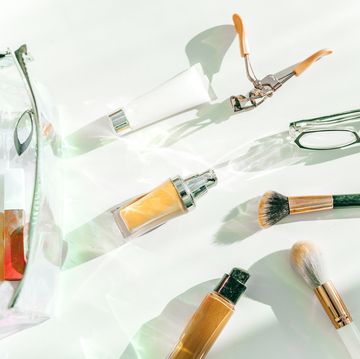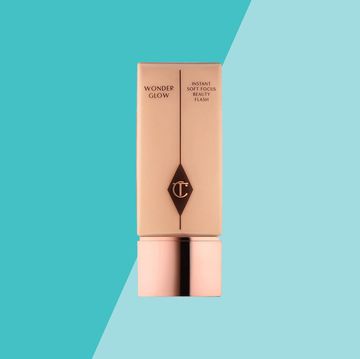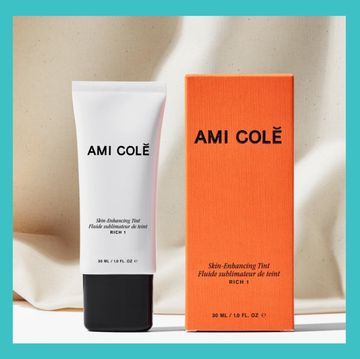Foundation can give you a flawless, even cosmetic base for your face. If your skin has a uniform color, texture, and appearance, the blush and eyeshadow colors you apply will look smooth instead of choppy. If you try to blend blushes and eyeshadows without foundation, they will most likely go on choppily or wear unevenly during the day. Foundation keeps those powdered colors in place.
Finding the Perfect Color
Whether you have red hair and fair skin or black hair and dark ebony skin, the foundation must match your underlying skin color exactly. Do not buy a foundation that will make your face look even a shade or two darker or lighter or change its underlying color in any manner. Find a foundation that matches your skin perfectly and goes on softly and smoothly.
Traditionally, skin color has been defined by the basic underlying tone, described as olive, when the skin appears ashen or green in color; sallow, when the skin has a yellow or golden shade; and ruddy, when the skin has overtones of pink or red. These categories hold true for all women, including women of color; your underlying skin color will always relate to one of those skin tones.
When you're purchasing a foundation, it is important to identify your overall, exact skin color and find a foundation that matches it, regardless of the underlying tone. For the most part, regardless of your race, nationality, or age, your foundation should be some shade of neutral ivory, neutral beige, tan, dark brown, bronze brown, or ebony, with a slight, and I mean very slight, undertone of yellow.
Why a slightly yellow undertone? Because skin color, more often than not, has a yellow undertone: That's just what the natural color of melanin (the pigment in the skin) tends to be. There are a few exceptions to this rule. Native North American or South American women, a tiny percentage of African-American women, and some Polynesian women do indeed have a red cast to their skin. They need to look for foundations that have a slightly reddish cast to them—but that's only a hint of brownish red, and not copper, orange, or peach.
Although you are attempting to exactly match the skin color of your face when you choose a foundation, in some cases it is more important to match the foundation to the color of your neck. If your face is darker than your neck and your foundation matches the face, it will look like a mask because of the difference in color. The opposite is also true. If your face is lighter than your neck and you put on a foundation that matches the face, it will still look like a mask because of the difference in color. In situations like this, match the foundation more to the neck color or to a color in between the color of the neck and the face.
Once you have selected a foundation color, there is only one way to be absolutely sure it is right for you: Apply the color all over your face and check it outside in the daylight. Check it from all angles and decide if it matches your skin exactly. If you applied it carefully but there are lines of demarcation at the jaw area; or if it looks too thick or too greasy, or gives the face an orange, pink, rose, or ashen tint; or if it looks heavy and opaque instead of sheer and light, go back to the testers. In fact, you may need to test several types before you find the right foundation.
One practical guideline to narrow down your choices is to test many different colors at once. Begin with several that look like good possibilities and place stripes of each one in a row over the cheek area. The best choice is the one that blends almost perfectly with your skin color. The wrong choices will stand out, with obvious edges that don't disappear into your skin.
This technique is a reliable way to eliminate some choices, but use it only as an elimination process. Still check out the color on your face in the daylight, and blend the foundation shade over a larger area of your face.
Keep trying on foundations until you find the best one. Once you've made a selection you feel good about, apply it all over your face, wait at least two hours, and check it again in the daylight.
Once you know how to go about finding the right foundation color, the next hurdle is figuring out the type of foundation best suited to your skin type. Note that many foundation types have effective sunscreen protection with an SPF 15 or greater and UVA-protecting ingredients of avobenzone, titanium dioxide, or zinc oxide. That means you can rely on these for sun protection if they are applied liberally and evenly all over the face.
If you prefer to wear a sheer, thin layer of foundation or don't want to wear foundation all over your face, then a moisturizer with sunscreen must be worn underneath. To ensure your foundation with sunscreen is protecting you all day, consider setting your makeup or touching up your makeup during the day with a pressed powder that contains sunscreen.
Excerpted from The Complete Beauty Bible: The Ultimate Guide to Smart Beauty by Paula Begoun with permission of the publisher.[pagebreak]
Oil-Free and Matte Liquid Foundations
Most of these contain oils (even though the names don't sound as though they do) or ingredients that act or feel like oils, such as silicones. These oils and oil-like ingredients are not necessarily bad for any skin type. Keep in mind that what most of these foundations have in common when they are well formulated is that they dry to a matte finish, with no shine or dewy appearance whatsoever. On the skin, "oil-free," matte foundations look like a traditional liquid foundation, although they are often thicker in appearance and have no shine.
Pros: These foundations are the best choice for women who want balanced coverage with no shine at all, and who like a smooth, matte look. They last much longer on oily skin or oily areas than most other foundations (except for the ultra-matte foundations), which for some women is a very desirable, if not essential, effect.
Cons: There aren't many disadvantages to using this kind of foundation. Some of them can make the skin look or feel dry and flaky, but this is usually true only for those that contain talc or other absorbent ingredients.
Ultra-Matte Foundations
These are an amazing group of products that truly stay put. Most have a very liquid consistency and are blended on like any other foundation, though precision blending is key. You have to be very careful about using a moisturizer under ultra-matte foundations. If you use too much, if it's too greasy, or if you don't allow it to be adequately absorbed, it can make the foundation gunk up or streak.
Pros: These foundations are a superior option if you have seriously oily skin, have trouble with makeup slipping or disappearing as the day goes by, live in a humid climate, exercise but still like your makeup to stay put, or like a completely matte finish. Ultra-matte foundations will outlast any other foundation, with no slippage or movement. If you have very oily skin, these are an absolute must to try.
Cons: Regrettably there are many disadvantages to using oil-free, matte foundations. Primarily the problem is that most of them go on rather heavy and look masklike, leaving the skin feeling very dry and taut. To get this makeup on evenly, you must blend quickly or it will dry in place before you know it, and then it can be difficult to blend further. This foundation type can also be hard to work over when applying cream eyeshadows and blush. Ultra-matte foundations have less movement than more emollient foundations, which means eyeshadow and blush have a tendency to stick to them; that can make blending and correcting mistakes a bit irksome, but not impossible.
Women of color should be careful when choosing ultra-matte foundation. Even if it is the right color, these foundations can tend to look gray and ashen after being applied to darker skin tones. Ultra-matte foundations are also the most difficult to remove. The number of options for ultra-matte foundations is dwindling, as women have undoubtedly had problems with them. This is unfortunate because these ingenious formulations can work so well for truly oily skins.
Water-Based and Standard Liquid Foundations
Water-based does not mean oil-free, even if the label says so; what it does generally mean is that the first ingredient is water and the second or third ingredient is some kind of oil or emollient slip agent. These foundations look like a somewhat thick liquid and pour slowly but easily out of the bottle. They are perfect for women with normal to dry skin.
Pros: Most water-based foundations are best for those with normal to dry skin. They are perfect for these skin types to wear without a moisturizer, or they can be worn with a moisturizer or a moisturizer that contains an SPF. The oil or emollient part of these foundations gives them good movement, which makes blending a pleasure and allows blushes and eyeshadows to blend on effortlessly and evenly over the face. Mistakes are easily buffed away with the sponge.
Water-based foundation is also a great option for women of color. The slight amount of emollient these contain helps create a nice glow on the skin, preventing darker skin tones from appearing dull or ashen. That same glow is also most attractive for women with dry skin.
Cons: If you have oily or combination skin, this is not the foundation type for you. Even the little bit of oil or emollients in a water-based foundation show shine almost immediately if you have oily skin.
If you are concerned about the small amount of shine that water-based foundations leave behind on the skin, try adding a light dusting of loose powder. After you've blended the foundation in place, you can apply the powder all over the face to reduce the shine.[pagebreak]
Oil-Based Foundations
Oil-based foundations list oil as their first ingredient and water usually as their second or third ingredient. Oil-based foundations feel greasy and thick, look greasy and thick, and go on greasy, yet can blend out quite sheerly and softly. You can blend an oil-based foundation to a very thin, subtle layer of makeup.
Pros: Oil-based foundations can be very good for women with extremely dry or wrinkled skin. The emollient ingredients help the skin look very dewy and moist, which can minimize the appearance of wrinkles.
Cons: Oil-based foundations tend to be very greasy and thick and can look that way on the skin unless you are very adept at blending.
They also have a tendency to turn orange on the skin because the extra oil in them affects the pigments in the foundation. This can be true for women of color, too, and it explains why oil-based foundations can look orange after they are worn for a while.
The typical recommendation for applying an oil-based foundation is to add water to your sponge so that it goes on thinner, and more like a water-based foundation. But that can be tricky to gauge and can cause the makeup to streak. Why not just use a water-based foundation in the first place and skip the negatives of the oil-based foundation?
Additionally, if you wear face powder over this type of foundation, the oil grabs the talc and the face can appear coated and heavily made up even if you blend it on thinly. The same is true for blushes and eyeshadows—they will go on more heavily because of the increased oil on the skin, and they will also become darker once applied. Traditional cream blushes tend to work best over this type of foundation.
Pressed Powder-Based Foundations
These foundations come in a compact and appear and perform much like any pressed powder, which is what they really are, only with a bit more coverage and ability to stay put. Almost all of them have a superior creamy, silky feel, but when applied to the skin they blend on as easily and lightly as any pressed powder.
Pros: Powder-based foundations are great for women with normal to oily or combination skin. They blend on easily and quickly, last all day, generally don't change color, and feel exceptionally light on the skin. They are best for those who want a minimal feel and appearance from their foundation. They also work very well over sunscreens, and can help reduce the shine some sunscreen ingredients (even those in a matte base) leave on the skin.
Cons: Women who have dry skin should not wear powder-based foundation. This is also not a good option if you have flaky skin, regardless of your skin type. The powder content makes this type of foundation too drying for someone with dry skin, and the way it goes on can make the skin look more dry and flaky. Also, women with very oily skin might want to be cautious, because powder-based foundations can get a thickened, pooled appearance as oil resurfaces on the face during the day.
Cream-to-Powder Foundations
These foundations are an interesting cross between a pressed powder and a creamy liquid foundation. They come in a compact and have a very creamy, almost greasy appearance. When you blend them on, the creamy part disappears and you are left with a slightly matte, powdery finish. Cream-to-powder foundations provide much better coverage than pressed powder-based foundations.
Pros: Cream-to-powder foundations blend on quickly and easily and provide a semi-matte, soft, medium coverage. They work great for someone with normal to slightly dry or slightly combination skin. The consistency doesn't require powdering after you apply it. If you wish to use powder, make sure you apply it as lightly as possible to avoid a caked, heavy look.
Cons: Cream-to-powder foundations can blend on slightly thickly, providing a made-up look rather than a sheer, natural appearance. They don't work well for someone with oily skin because the cream components can be too creamy, making skin look more oily, and they don't work well for dry skin because the powder part can be too powdery-looking and cause more dryness. Essentially, they are best for normal skin types.[pagebreak]
Liquid-to-Powder Foundations
These liquidy powders with a gel-like wet feel apply easily and dry to a satiny-smooth, sheer, slightly matte finish. They typically contain water as the first ingredient, along with a slip agent such as glycerin. In contrast to cream-to-powder foundations, liquid-to-powder foundations feel significantly lighter on the skin. They also tend to last longer over combination or oily skins because the creamy, waxy ingredients are either decreased or altogether absent.
Pros: Liquid-to-powder foundations blend on quickly and relatively easily and provide a semi-matte to matte finish with sheer to medium coverage. They work great for someone with normal to oily or slightly combination skin. The consistency means that it doesn't require powdering after you apply it. If you wish to use powder, make sure you apply it as lightly as possible to avoid a caked, heavy look.
Cons: Liquid-to-powder foundations dry quickly and can, therefore, blend on choppy, making application tricky. This type of foundation does not work very well over dry skin because the water portion tends to cling to dry areas, leaving a powder finish that is not easily moved. If you have dry skin and want to try this type of foundation, use an emollient moisturizer or sunscreen beforehand.
The product itself must be kept tightly closed between uses because the water component will evaporate if left exposed to air for long periods. Some of the compact liquid-to-powder makeups can chip or break apart if you are not careful while swiping your sponge over the makeup.
Stick Foundations
These foundations are essentially cream-to-powder foundations in stick form, and the application, pros, and cons mentioned in that section are the same. The main difference between stick and cream-to-powder foundations is the variety of coverage available from sticks. Whereas cream-to-powder makeups typically provide medium coverage, stick foundations come in formulas that range from full to sheer coverage with either matte or creamy texture. Many stick foundations also feature effective sunscreens, making them a great all-in-one option. In addition, they can do double duty as a concealer, and most product lines offer a wide selection of shades.
Application: These can be swiped onto the skin right from the stick and then blended with a sponge, fingers, or—if you're up for the challenge—a foundation brush.
Pros and Cons: Same as for cream-to-powder foundations
Foundations with Shine
A definite trend in the world of makeup is having your entire face shine, either with a makeup primer, foundation, or a powder that shines. Shimmering shine (as opposed to naturally produced shine) seems to be "in" and I have to admit that it does look great in pictures. In real life (and especially in daylight), however, it tends to look sparkly or extremely artificial, and if you have normal to oily skin, it looks like the very oil you were trying to do away with.
This type of foundation works better as an evening look than for a classic daytime look.
Application: The method of application varies, depending on if it comes in a stick or has a cream-to-powder, liquid, cream, or powder base. Generally, a sponge can be used for all of these. A brush can be used if the intent is to highlight specific areas.
Pros: For dull, lifeless skin, the best of the foundations with shine can indeed add a subtle glow to the face, but the more product applied, the more the glow turns into obvious, sparkly shine or looks somewhat greasy.
Cons: In a word, shine. There's a lot of variation when it comes to how much visible shine you'll get from these products, so pick and choose based on whether you want a subtle glow or high-wattage shimmer.[pagebreak]
Custom-Blended Foundations
Blending Foundation
When it comes to blending foundation over your face, keep one mantra in your head: Blend, blend, and blend again, and then, just to be sure, blend one more time. All the other details are, well, just details, and not anywhere near as important as buffing off the excess foundation and smoothing out the edges to be sure you have the thinnest possible layer of foundation over the skin.
Exception to the rule: If you are using a foundation that contains an effective sunscreen, a thin or sheer application will not provide adequate protection from the sun. To ensure you will be getting the stated SPF, it is essential to apply the foundation liberally and in an even layer all over the face. If you prefer a sheer or spot application, then you will need to wear a separate sunscreen underneath your foundation or consider a tinted moisturizer with sunscreen or a pressed powder that contains sunscreen.
Keep in mind that the goal of wearing foundation is to create the illusion of smoother-looking skin, not a noticeable mask of color. Of course, the best place to check your blending technique is in broad daylight. Unfortunately, most of us apply foundation in bathroom light, with only minimal exposure to sunlight. Once you get into daylight, even on a cloudy day, the areas you missed, particularly next to the ears, mouth, jawline, sides of the nose, and temples, often look streaked, show a line of demarcation (even when the color matches perfectly), or appear blotchy or smudged.
Smoother-looking skin takes diligence and daylight, or the very best lighting you can create in your home, where you apply your makeup. But whenever possible always check your foundation in daylight before showing your made-up face to the world!
Blend foundation with a sponge because applying foundation to your skin with your fingers leaves streaks and lines. Using the flat, smooth surface of a sponge is the best way to get a smooth application.
The best tool is a flat, square or round, one-quarter-inch-thick sponge that doesn't have holes and is not made of synthetic foam rubber. Together, the shape and density of this kind of sponge provide the smoothest application possible.
Clean or change your sponges frequently, particularly if you tend to break out or have rosacea, psoriasis, seborrhea, or eczema. While sponges are great blending tools, they hold on to bacteria, fungi, and yeast that can aggravate those conditions.
The sponges frequently found for sale or in use at most cosmetics counters are the thick, wedge-shaped, foam-rubber ones. These sponges are compact, but they drag over the skin, and that makes blending difficult. Also, because they're so thick, most of the foundation is absorbed into the sponge, where you can't get to it, which can waste a lot of product.
Wedge sponges are used for traditional theatrical makeup. They are great for applying grease stick or pancake foundations, which require more "pull" across the face to apply them evenly, but that is the last thing you need when you're wearing a lightweight foundation. Shiseido, Sephora Collection, and Paula's Select make some excellent makeup sponges--and these can be washed repeatedly without falling apart.
To achieve an even application with your nice, thin, flat, square or round sponge, shake some of the foundation from the bottle onto the sponge, then transfer the foundation to the face and over the eyes by dabbing the sponge over the skin. You can also use your fingers to transfer the foundation in dots from the bottle to the face and then use the sponge to blend the dots.
Start by placing the foundation generously over the central area of the face, including the eyes but avoiding the sides of the face near the hairline, jaw, and chin. The foundation can go on in large patches or small dots all over the nose, eyelids, cheeks, and forehead, but only in this central area. Avoid placing the foundation all over the face unless you want a full makeup application or are using a foundation that contains sunscreen as your only source of sun protection.
By concentrating the foundation over the central part of the face, as you blend down and out from the center there will be less foundation at the jaw and hairline. When applying a foundation with sunscreen, apply an even layer all over the face, and use the clean side of your sponge to softly feather the edges of the makeup at the jaw and hairline. The objective is to soften, but not wipe off, the foundation.
Once the foundation is on your face, begin using your sponge to blend the foundation evenly. Holding the sponge between your fingers and thumb, spread the foundation down and out over the entire face with a stroking, buffing motion, going in the direction of the hair growth. (Going against the direction of the hair growth on your face coats the hair with too much foundation.)
The idea is to blend the foundation color out from the center of the face, where you initially placed it, to the perimeter of the face, leaving no line of demarcation at the jaw or hairline. Use the edge of the sponge without foundation (or turn the sponge over to the clean side) to dab or buff away any of the excess that tends to collect under the eye or around the nose.
You can also use the sponge to wipe away any of the excess that gathers at the jaw or hairline. When blending the foundation, do not try to force it into the skin. There is a fine line between blending something on and wiping something off. Instead, blend a thin layer over the face, smoothing it with your sponge as you go. Using this technique, you can build coverage as desired. At this point your sponge should not be full of foundation; if it is, you've used too much.
Watch out for the jaw and neck. This is very important. Never, ever put makeup of any kind on the neck; you do not want your makeup to end up on your collar. Always double-check your blending. Places on the face that you are likely to miss with foundation include the corners of the nose, the tip of the nose, the corners of the eyes (especially over the concealer), and the edge along the lower eyelashes.[pagebreak]
A Mini-Application of Foundation
If you dislike the feel of foundation or if you want to wear the least amount of foundation possible, yet you still want the benefits that wearing a foundation provides (mainly helping blush and eyeshadows go on more evenly), there is an alternative. The thing most women don't like about foundation is how it feels when it's applied all over the face. One way to solve that problem is to not apply foundation all over, basically because it isn't necessary. (Of course, if your foundation contains your sunscreen, that does require applying it evenly all over the face.)
The key points to remember, aside from the question of sunscreen protection, are that foundation is needed primarily to give the blush and eyeshadows something to adhere to, and to even out skin tone. If your foundation color matches the face exactly, you can apply a mini-application of foundation just over the areas where you will place the blush and eyeshadows. This way you won't feel heavily made up and the blush and eyeshadows will still go on evenly.
For a mini-application, place the foundation only over a mask-shaped area between the eyes and mouth, including the nose and cheeks. Coverage is not needed on the chin, forehead, or jaw area. Be sure to blend the edges carefully with your sponge.
Apply the concealer the same way you would for a full makeup application. You may also want to consider a tinted moisturizer if you want a touch of color and minimal coverage. Lancome, Aveda, Neutrogena, and Bobbi Brown all have excellent options for tinted moisturizers.
Blending Over Fine Wrinkles
If you've started to notice that foundation or concealer is sinking into some of those little wrinkles on your face, especially the laugh lines, lines under the eyes, or near the crow's-feet, you have to be even more meticulous about how you blend your foundation into place. Less is best. Blend, blend, and blend again, being sure to remove the excess in those areas with the clean side of the sponge. Continue blending intermittently while you apply your lipstick, blush, and/or eyeshadow to ensure that you have removed the excess.
Minimize your use of moisturizers over the areas where you have lines, and use a foundation or concealer that's neither greasy nor too emollient. Anything with movement and slip gives the foundation a free ride into the lines.














